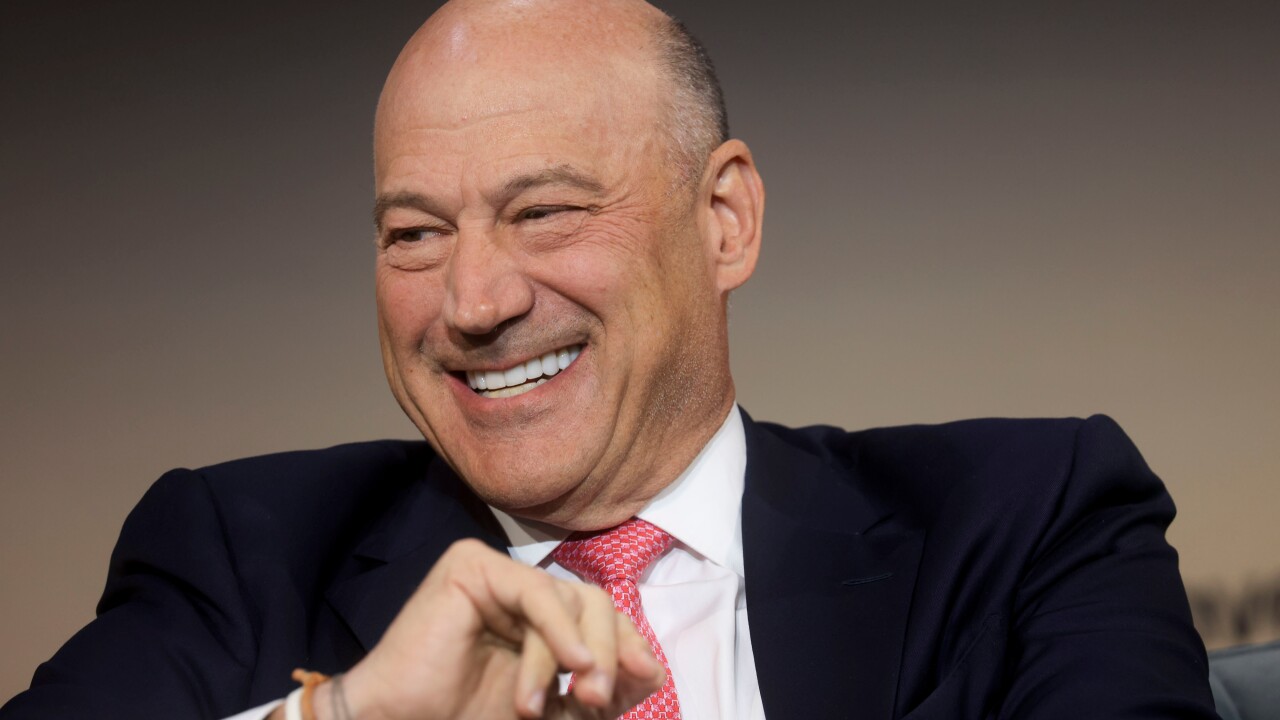USG Corp. yesterday filed a prepackaged bankruptcy plan it said was "overwhelmingly" approved by all affected creditors.
"Obviously, when you have such an overwhelming level of support it indicates confidence in the future viability of the company," said Matt Gonring, a USG spokesman.
The filing, limited to the holding company, caps a roughtly two-and-a-half year debt reduction campaign Gonring said. The company initially attempted an out-of-court restructuring, but decided against it out of fear that some creditor holdouts might make that route uneconomical.
"We're anxious to get back on our financial feet," he said, adding that USG's efforts to regain financial health coincides with an improvement in the economy and the growing likelihood of increased demand for the building materials USG makes.
"Yes, I agree," said Brian Bogart, a junk bond analyst with Duff & Phelps/MCM Investment Research Co. in Vermont. "There have been price increases on gypsum recently [and] I think there will be more later this year."
Those increases are part of a general recovery in the building industry. Bogart said the plan's approval was not surprising because "people had heard the voting was going well."
The plan filed yesterday in U.S. Bankruptcy Court in Delaware is the same one the company had announced earlier, Gonring said.
In a prepackaged bankruptcy, a plan is negotiated and approved before the company files for Chapter 11, significantly shortening the time a company spends in bankruptcy, a USG release says.
The plan received approval from more than 95% from every affected creditor class, including the company's 16% bondholders and stockholders, the release says.
Ralph Hellmond, president of Hellmond Associates Inc., an investment bank that advised the 16% holders, yesterday said those holders initially opposed the plan but came to an agreement in late January after the company offered to change it. The amended plan offered more consideration to the 16% holders and less to common stockholders and management, he said. The revised plan gave the 16% holders received nearly double the number of warrants they would have received under the old one.
"I trust you aware that this is a very impressive showing," Hellmond said, noting both the high percentage of approvals and a large voter turnout. With little to hold it back, Hellmond expects the company to proceed through the bankruptcy process quickly.
Voting on the plan ended Monday. A confirmation hearing has been scheduled for April 23. The company's prepackaged bankruptcy plan will become effective 30 days after that confirmation. Based on the court's schedule, USG hopes to emerge from the bankruptcy by the end of the second quarter.
Bogart, however, said that it is possible the company could be out of bankruptcy by May.
He observed little change in USG's bonds by about 2:30 p.m. yesterday, with the company's 13 1/4% debt trading in the 60 to 61 range and its 16% debt at about 15 cents on the dollar.
USG's plan calls for effecting a l-for-50 reverse stock split. The split reducers the number of shares while increasing the price per share. The plan also calls for the following changes.
* Each $100 principal amount of 7 3/8% senior notes due 1991 would be exchanged for $750 million principal amount of 8% senior notes due 1995 and $250 principal amount of 9% senior notes due 1998.
* Each $1,000 principal amount of 13 1/4% senior subordinated debentures due 2000 would get 50.81 shares of common stock.
* Each $1,0000 principal amount of 16% junior subordinated debentures due 2008 would receive 11.61 share of common stock at a strike price of $16.14 a share.
* Common stockholders will keep their existing shares, subject to the reverse stock split and the issuance of new common stock and new warants to holders of 13 1/4% senior subordinated debentures and 16% subordinated debentures under the prepackaged plan.
Explained another way, the division of post restructuring equity goes as follows: 3% to shareholders, 82% to 13 1/4 holders, and 15% to the 16% holders, Gonring said.
The actions and the stock split will occur by the effective date and the company's new stock will begin trading n the New York Stock Exchange on that date.
The bankruptcy court has already approved USG's motions authorizing it to continue to pay all employees and suppliers throughout the bankruptcy proceedings, and to keep paying all employee and retiree benefits uninterrupted.
Among other approvals it granted, the court also will allow USG to continue interest payments on all of the corporation's senior debt.
The prepackaged plan is limited to the parent holding company only and the daily operations of USG's operating subsidiaries including U.S. Gypsum Co., USG Interiors, L&W Supply, CGC Inc., and USG International.
"The operating subsidiaries will not be parties to the bankruptcy, and will continue to fullfill all of their supplier, customer and employee obligations in the normal course of business," the release says. "In addition, the first day orders entered by the court allow USG to continue to pay all trade vendors and employees in the normal course of business, including any pre-petition amounts which may have been outstanding the day of the filing."
To make sure USG's major operating subsidiaries will have the liquidity they need during the bankruptcy proceeding, and $80 million interim receivables financing facility has been made available to U.S. Gypsum Co. and USG Interiors. The rest of the subsidiaries have their own cash balances to pay trade creditors and employees, the release says.
USG and its subsidiaries had more than $180 million of cash on hand as of Dec. 31 to keep up their trade credit and supplier relationships, the release says.
In secondary trading, spreads on long-term high-grade issues saw some widening, while spreads on short-term and intermediate issues finished unchanged. High-yield bonds ended up about 1/8 point.
New Issues
Houston Light & Power issued $250 million of 7.75% first mortgage bonds due 2023. Noncallable for 10 years, the bonds were priced at 99.788 to yield 7.768% or 89 basis points over comparable Treasuries. Moody's rates the offering A2, while Standard & Poor's rates it A. Goldman, Sachs & Co. lead-managed the offering.
Federal Home Loan Mortgage Corp. issued $200 million of 6.22% notes due 2003 at par. The noncallable notes were priced to yield 18 basis points over 10-year Treasuries. Merrill Lynch managed the offering.
Federal Home Loan Mortgage Corp. issued $200 million of floating-rate notes due 1996 at par. The noncallable notes float quarterly at 195 basis points under the seven-year CMT and pay quarterly. Lehman Brothers managed the offering.
Federal Home Loan Mortgage Corp. issued $100 million of 4.675% notes due 1996. Noncallable for a year, the notes were priced initially at par to yield 21 basis points over comparable Treasures. Goldman, Sachs & Co. sole-managed the offering.
Anadarko Petroleum issued $100 million of 6.750% notes due 2003. The noncallable notes were priced at 99.54 to yield 6.815% or 75 basis points over comparable Treasuries Moody's rates the offering A3, while Standard & Poor's rates it BBB-plus. Kidder, Peabody & Co. managed the offering.
Federal Home Loan Mortgage Corp. issued $100 million of 6.16% notes due 2000. Noncallable for three years, the notes were priced at par to yield 42 basis points over seven-year Treasuries. Salomon Brothers lead-managed the offering.
Federal Home Loan Mortgage Corp. issued $100 million of 4.06% notes due 1995 at par. The noncallable bonds were priced at five basis points over comparable Treasuries. Merrill Lynch managed the offering.





